Fall Lawncare Tips for Homeowners – Recover from Summer & Prepare for Winter!
As the temperatures begin to drop and the leaves start changing colors, it’s time to think about preparing your lawn for the winter months ahead. Fall lawn care is essential not only for maintaining a healthy, beautiful yard, but also for ensuring that your grass will bounce back resiliently come springtime.
During fall, your lawn will need some extra attention to help it recover from summer stress and prepare for the winter dormancy. It’s essential to remove leaves, maintain proper watering and mowing routines, and take steps like aerating and fertilizing to improve soil quality and strengthen grass roots.
By following these crucial fall lawn care tips, you’ll set your yard up for success and keep it looking its best throughout the colder months.
So, let’s dive into the essential tasks and tips that will not only protect your yard during winter but also pave the way for a lush and vibrant lawn come spring.
Understanding Your Lawn’s Needs
When preparing your lawn for winter, it’s essential to understand its specific needs. This foundation of knowledge will help you make informed decisions and take the necessary steps to maintain a healthy lawn throughout the colder months.
Identify Your Grass Type
The first step is to identify your grass type. There are two main categories: cool-season grasses and warm-season grasses. Each type has its own needs and responds differently to seasonal changes.
Cool-season grasses include species such as:
- Kentucky bluegrass
- Perennial ryegrass
- Fine fescue
- Tall fescue
These grasses grow most actively in the fall and spring when temperatures range from 60-75°F. They require attention during the fall months to prepare them for winter dormancy.
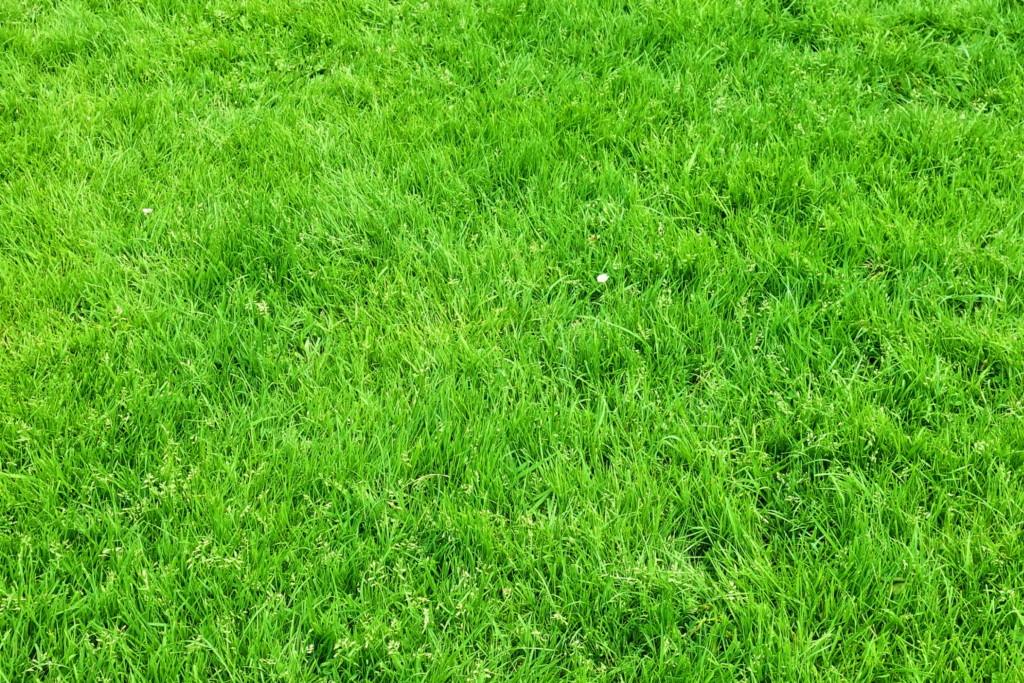
Warm-season grasses include species such as:
- Bermuda grass
- Zoysia grass
- St. Augustine grass
- Centipede grass
Warm-season grasses thrive in temperatures between 80-95°F and grow most vigorously during the hot summer months. Although they can go dormant during the winter in colder regions, they still need some attention in the fall to keep them healthy.
Understanding your lawn’s needs based on its grass type is crucial to ensure it gets proper care in the fall.
Fall Lawn Care Basics
Mowing Techniques
During the fall season, it’s essential to adjust your mowing techniques to help your lawn prepare for winter.
Raise your mower blade height to 1/2 to 1 inch higher than usual. This allows the grass to increase leaf area, capturing more sunlight and leading to more stored food in grass roots as winter approaches.
The lawn will also become denser as leaf area expands, which helps prevent weeds from establishing during the grass’s dormant season.
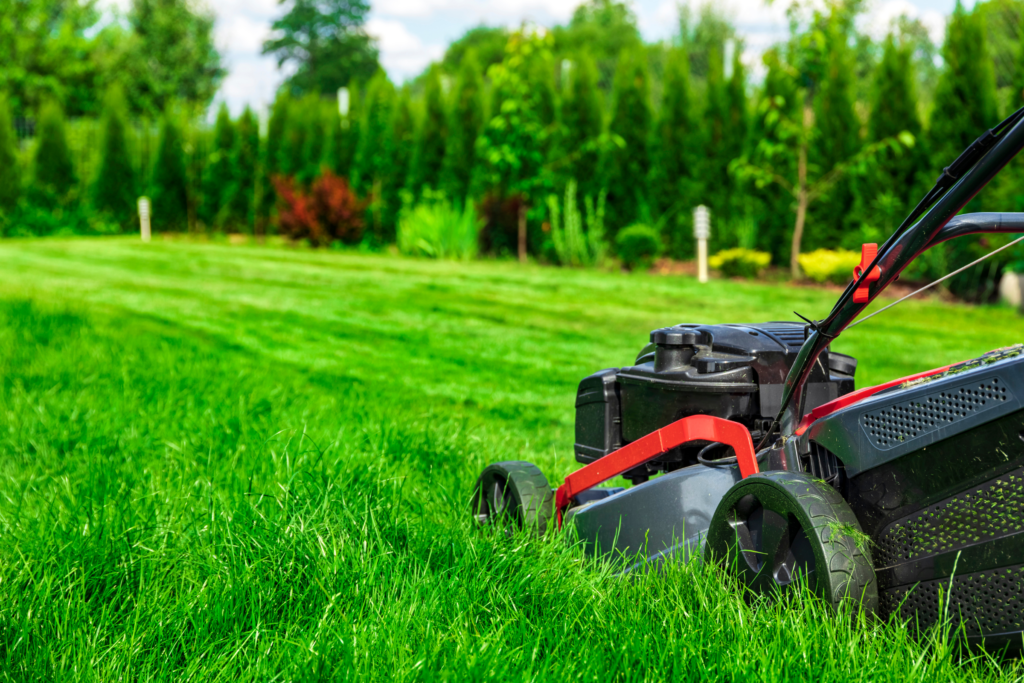
Watering Appropriately
Even in fall, your lawn still requires proper watering to maintain its health.
Continue to water your lawn as needed until the first hard frost. Watering should be done early in the morning, allowing the grass blades to dry before evening. This will minimize the risk of disease and pests.
Be sure to monitor the weather closely and reduce watering frequency if there’s substantial rainfall.
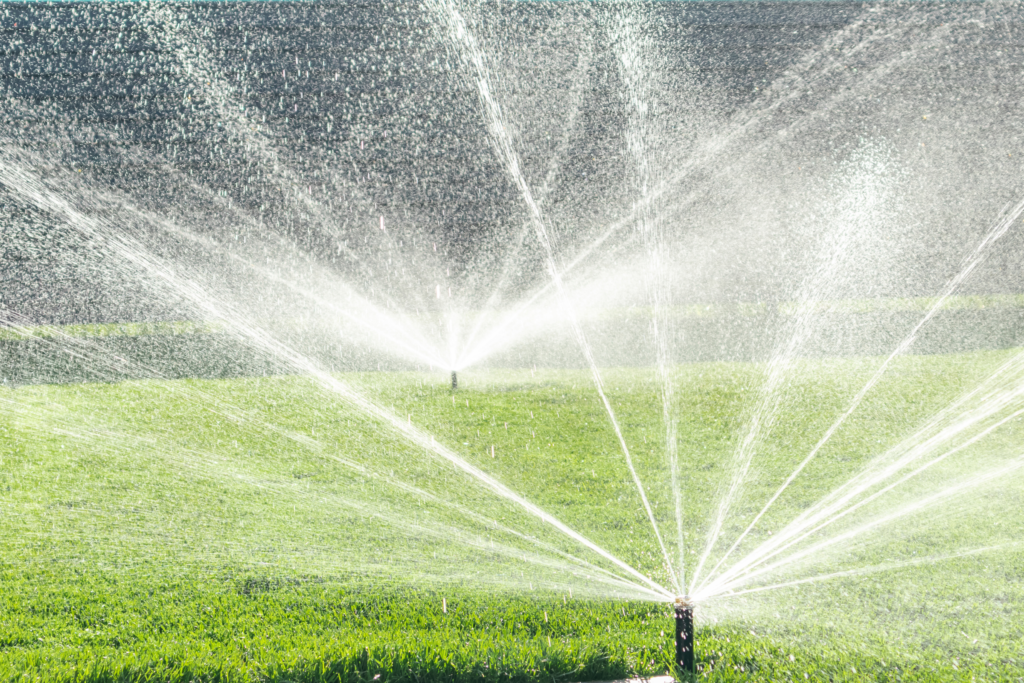
Raking and Removing Debris
One of the most important fall lawn care tasks is raking and removing fallen leaves and debris. A buildup of leaves can block sunlight, trap moisture, and suffocate your grass.
Regularly rake or use a leaf blower to remove leaves and debris from your lawn. This helps maintain a healthy environment for your grass and prepares it for the winter season.
By keeping your lawn clear of debris, you’ll also reduce the risk of disease and provide a better growing environment come spring.
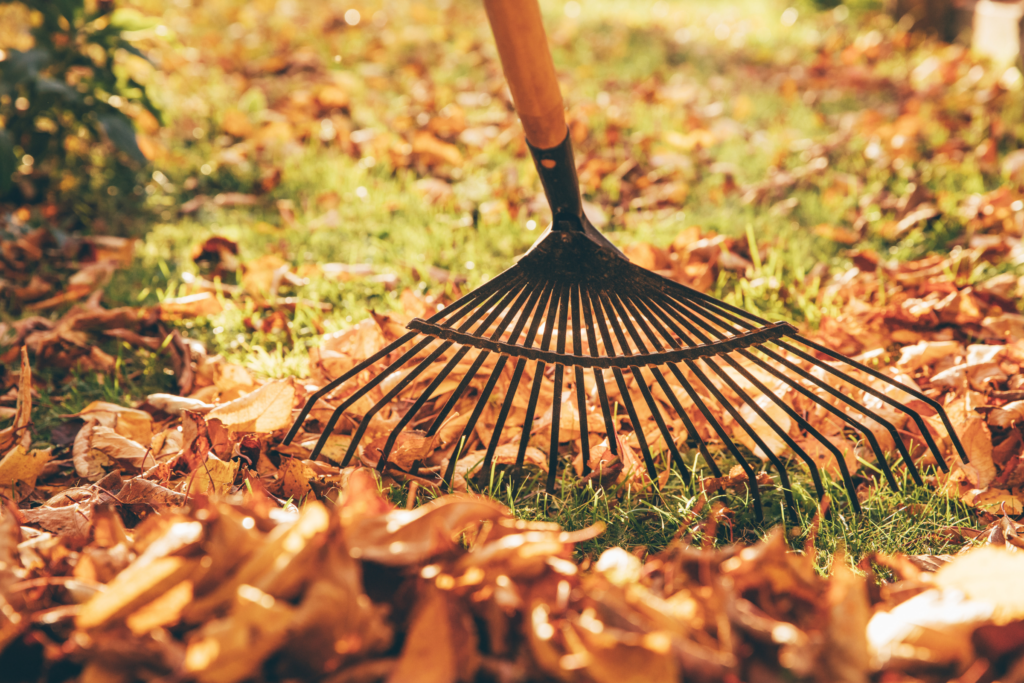
Aeration and Overseeding
Why Aerate
Aeration is essential for ensuring a healthy and vibrant lawn. It allows air, water, and nutrients to reach the grass roots and promotes a robust root system.
Aerating your lawn can significantly improve its growth and resilience to issues such as drought. When you aerate your lawn, it also creates better conditions for overseeding.
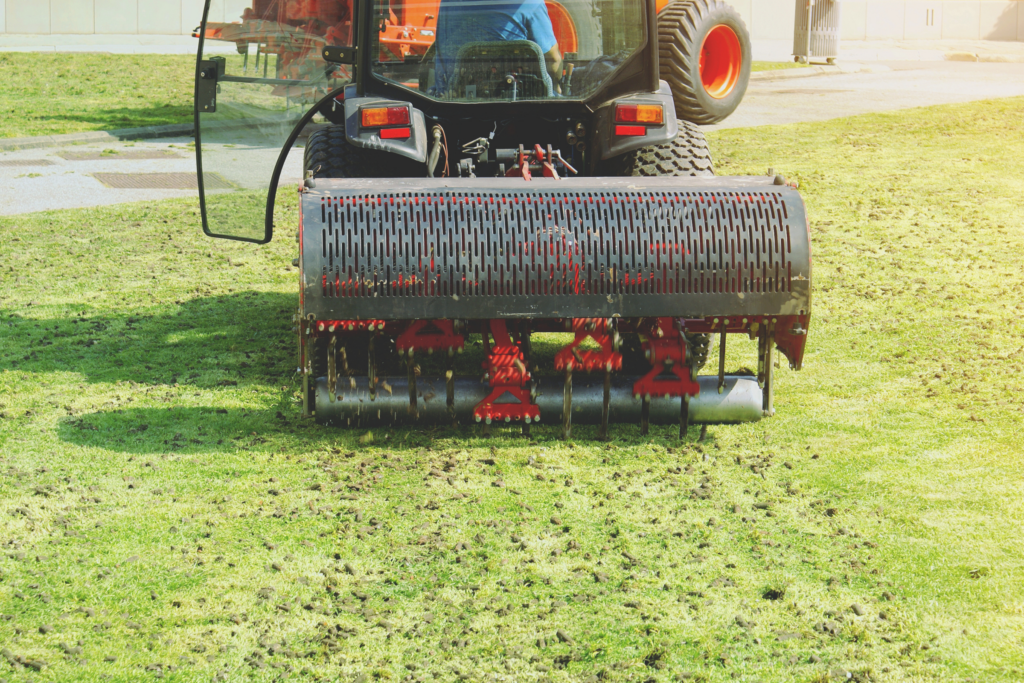
How to Overseed
Overseeding is the process of spreading grass seed onto an existing lawn to fill in thin or patchy areas, improving the overall appearance and health of your lawn.
Here is a step-by-step guide for overseeding your lawn:
- Choose the right grass seed: Select a grass seed that is appropriate for your lawn’s specific needs and climate. You can find guidance on the best grass seeds for your region from a local garden center or online resources.
- Prepare the lawn: Mow your existing lawn to a height of around 1.5 inches. This will help the new grass seeds make better contact with the soil. Remove any debris or dead grass after mowing.
- Aerate your lawn: Rent or purchase a core aerator to remove small plugs of soil, creating holes in the ground. This will help your lawn receive the necessary air, water, and nutrients.
- Seed distribution: Use a broadcast spreader or handheld spreader to spread the grass seed evenly across your lawn. Follow the recommended seeding rate on the grass seed packaging to ensure proper coverage.
- Rake and water: Use a leaf rake to mix the seeds into the soil lightly, ensuring good contact with the ground. Water your lawn lightly, two to three times a day until the seeds sprout. After they sprout, water once a day for 15-30 minutes.
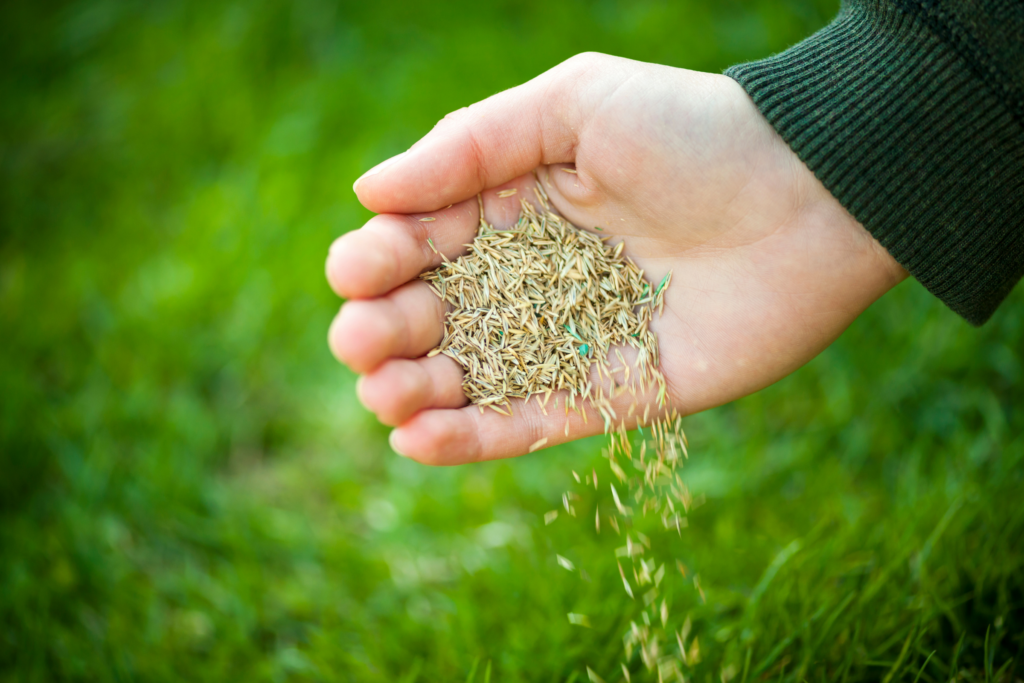
By following these steps, you will effectively overseed your lawn and help prepare it for optimal growth during the winter months.
With proper aeration and overseeding, your lawn will be healthier, thicker, and more resilient come springtime.
Nutrition for Your Lawn
When and How to Fertilize
Fertilizing your lawn in the fall is essential for promoting healthy root growth while the ground is still soft and before the first frost.
Most lawn care professionals suggest fertilizing cool-season turf once per year, typically in October or November.
To fertilize your lawn effectively, follow these steps:
- Choose a balanced, slow-release fertilizer with a proper ratio of nitrogen (N), phosphorus (P), and potassium (K).
- Apply the fertilizer evenly across your lawn, using a spreader for better precision.
- Water your lawn after applying the fertilizer to help it absorb the nutrients.
In addition to N, P, and K, lawns also require micronutrients like iron and zinc, which can be found in some fertilizers. Adding lime to your lawn during fall can help adjust the soil acidity and improve nutrient availability.
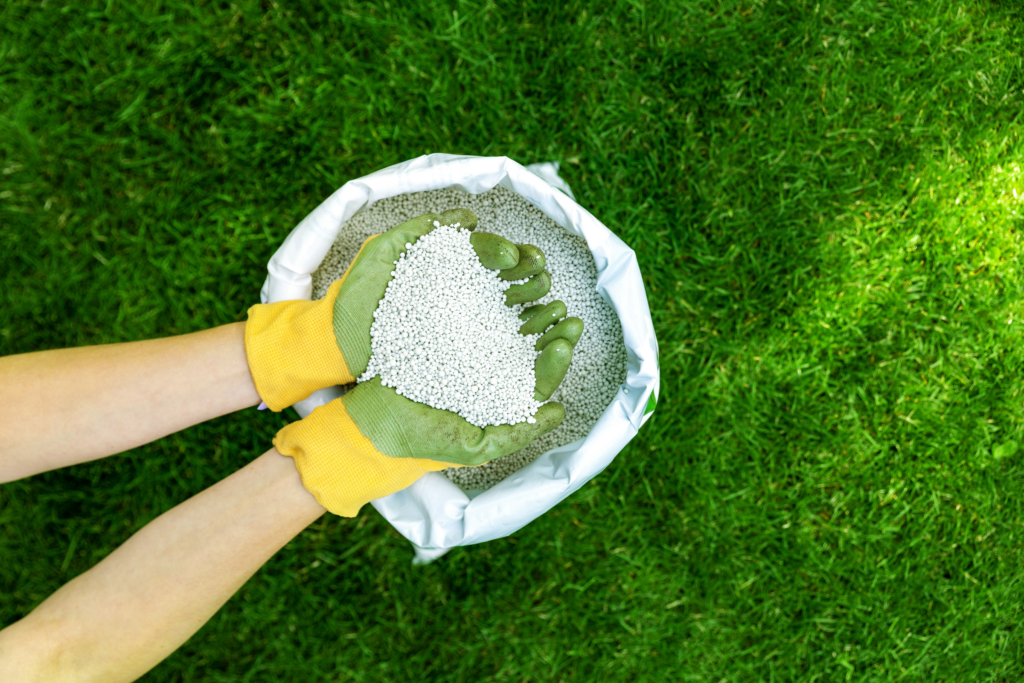
Creating a Healthy Compost
Compost is an excellent source of organic matter and added nutrients that will improve your lawn’s overall health.
Composting is also an environmentally friendly way to recycle household waste, such as kitchen scraps and yard trimmings.
To create a healthy compost pile for your lawn, follow these steps:
- Select a suitable area for your compost pile, preferably a level spot with good drainage.
- Add a mix of green and brown organic materials, such as fruit and vegetable scraps, leaves, grass clippings, and small branches.
- Turn the pile regularly with a garden fork to promote airflow and speed up the decomposition process.
- Keep the compost pile moist but not soggy.
- Allow the pile to decompose, which may take a few months depending on the conditions.

Once your compost is ready, you can top-dress your lawn with a thin layer of compost to improve soil structure, retain moisture, and supply essential nutrients.
A healthy, well-nourished lawn will be more resilient during the winter months and will bounce back faster in the spring.
Preparing for Weather Changes
Protecting from Frost and Snow
As cooler weather approaches, it’s essential to protect your lawn from frost and snow.
One way to do this is by gradually lowering your mower’s cutting height to avoid stressing the grass. By mowing down to 1 to 1½ inches, you’re making it easier for your lawn to breathe and allowing for better aeration.
Keep your lawn free of leaves in the fall, as they can block light and trap moisture, creating a soggy environment that’s prone to snow mold. Regularly rake or blow leaves away to keep the grass healthy and well-exposed to light.
Fertilize your lawn with a slow-release, balanced fertilizer to encourage deep root growth before the ground gets too hard due to frost. This helps your lawn store nutrients during winter, ensuring that it returns healthier and greener in the spring.
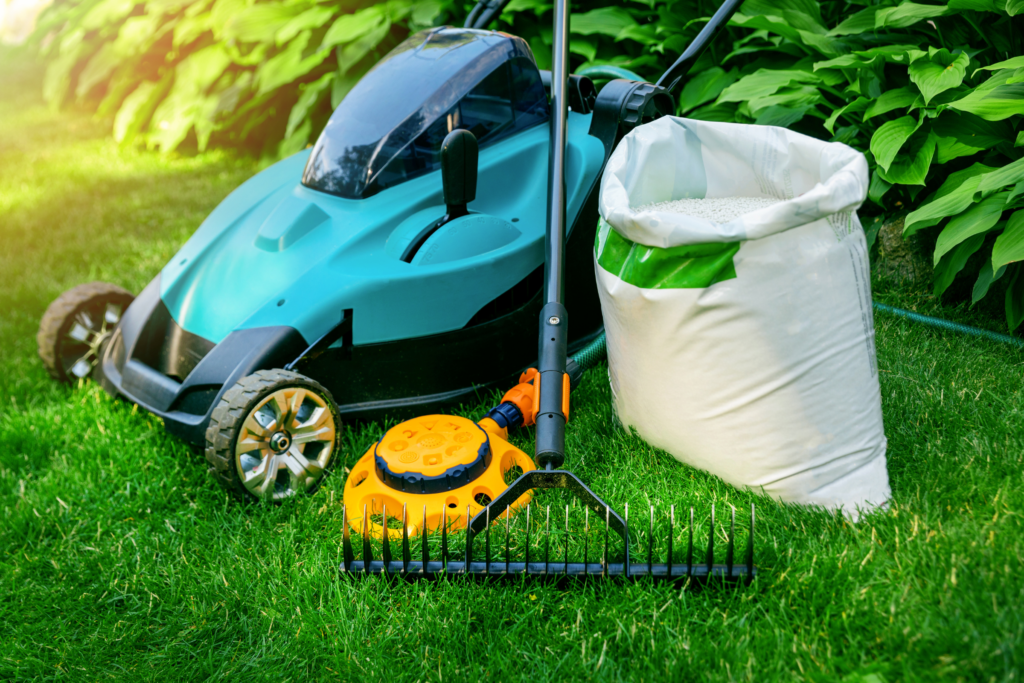
Dealing with Drought
Drought can damage lawns, especially during winter. To help your lawn withstand dry conditions, you can take several steps:
- Aerate: Aerate your lawn to improve water penetration and reduce soil compaction.
- Apply lime: If your soil is too acidic, applying lime can help restore its pH balance and improve nutrient absorption.
- Fertilize: Fertilize your lawn with a winter nutrient blend, focusing on nitrogen and potassium to strengthen roots and build drought resistance.
- Irrigation: Make sure your irrigation system efficiently provides just enough water to keep your lawn healthy without over-watering. You may want to invest in a smart irrigation system that adjusts based on real-time weather data.
As you adapt your winter lawn care routine to changing weather conditions, remember to stay proactive, monitor your lawn’s health, and adjust your methods accordingly.
Addressing Common Problems
Treatment for Weeds and Pests
Weeds and pests can cause damage to your lawn, making it difficult for grass roots to establish themselves properly. To prevent these problems, follow these steps:
- Identify the weeds and pests affecting your lawn. Familiarize yourself with the common types in your area.
- Apply a pre-emergent herbicide in early fall to prevent weed seeds from germinating and establishing themselves.
- Treat for pests as needed, using organic or chemical solutions depending on the severity of the issue and your preferences.
- Overseed your lawn to outcompete weeds and improve the overall health of your grass.
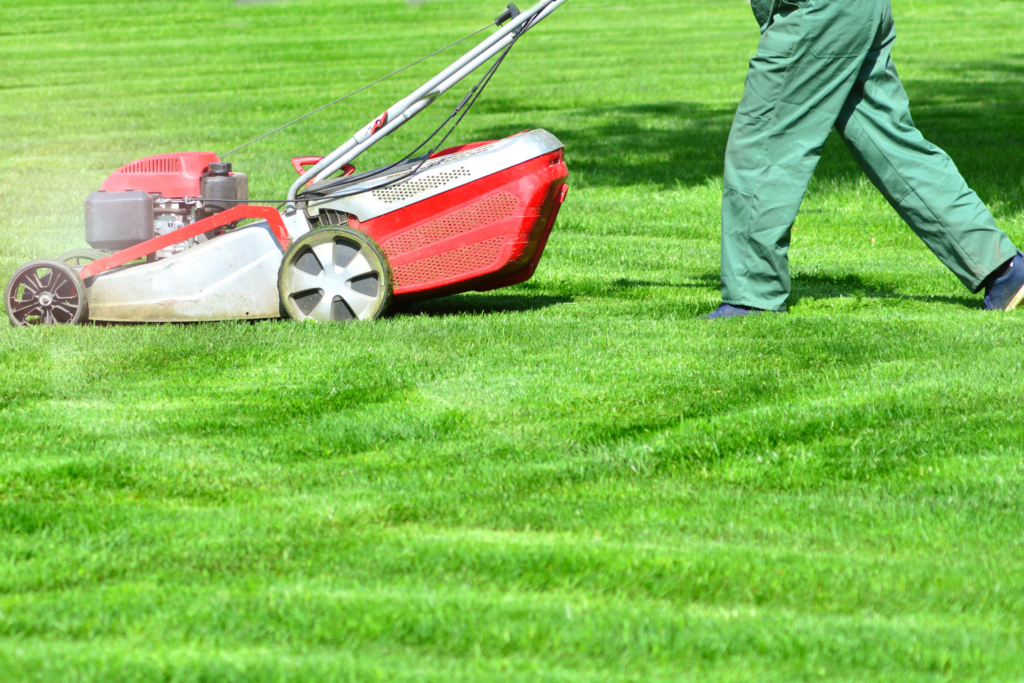
Repairing Bare and Dead Spots
Bare and dead spots can be an eyesore and leave your lawn vulnerable to further damage. To fix these issues, follow these guidelines:
- Remove any debris from the affected area, such as leaves or branches, to allow sunlight to reach the ground.
- Aerate the soil by poking holes in the ground, allowing air, water, and nutrients to penetrate the soil and reach grass roots.
- Apply a layer of mulch to help retain moisture, suppress weeds, and improve the overall health of the surrounding grass.
- Reseed the area with grass seed and lightly cover with mulch, ensuring that the seed has good contact with the soil.
- Water regularly until the grass has established itself and blends in with the rest of your lawn.
Do not forget to also look out for red thread, a common lawn disease. If you notice patches with red thread-like structures, apply a nitrogen-rich fertilizer to help your lawn recover.
Remember to keep up with these fall lawn care tips to ensure a healthy and beautiful lawn throughout the winter months and into the spring.
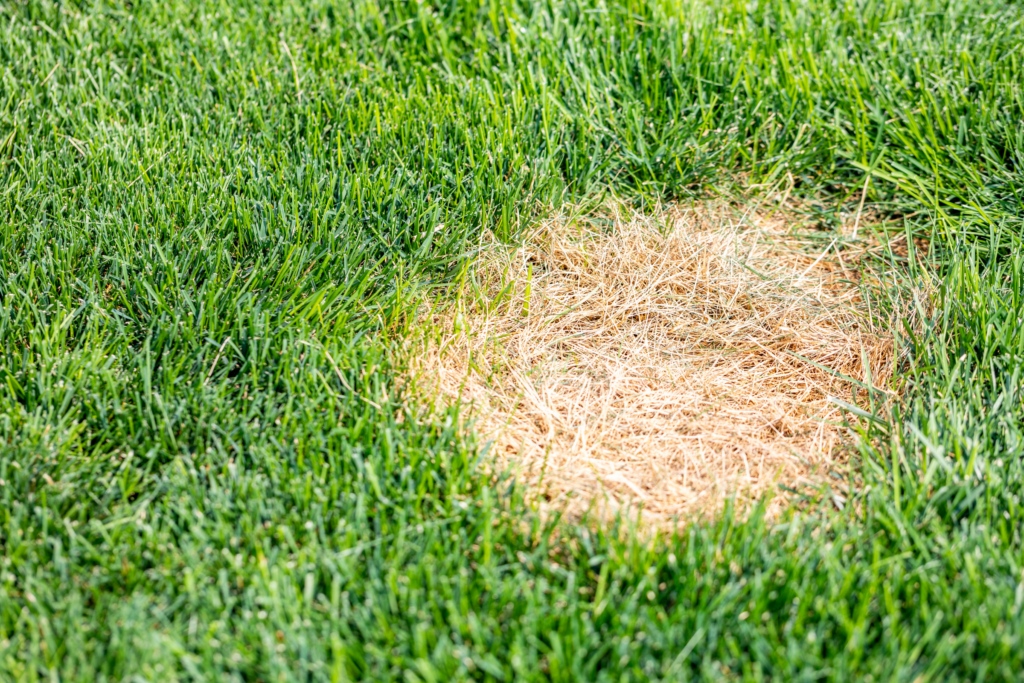
Preserving Trees and Shrubs
Proper Watering and Nutrient Techniques
To ensure the health of your trees and shrubs throughout the winter, it’s important to provide proper watering and nutrient techniques. Water your trees and shrubs deeply but infrequently to encourage deep root growth.
Make sure you don’t overwater, as this can lead to root rot and other issues. Always water early in the day to allow the moisture to soak into the soil before the temperature drops at night.
In addition, consider applying a slow-release fertilizer to your trees and shrubs in the fall. This will provide essential nutrients that will help them better withstand cold temperatures. Make sure to follow the manufacturer’s instructions, as using too much fertilizer can burn the roots and cause damage.
Winterizing Your Garden Beds
Preparing your garden beds for winter is crucial to protect your plants and ensure their survival and growth for the following season. Here are some steps to take:
- Remove debris: Clear away fallen leaves, twigs, and other debris from your garden beds to prevent mold, mildew, and disease.
- Cut back perennials: Prune perennials to about 3-4 inches above the ground, as this will help prevent rot and keep the plants healthier.
- Mulch: Apply a 2-3 inch layer of organic mulch around your plants, especially those in more exposed areas, such as the north side of your property. This will help insulate the soil and prevent root damage during temperature fluctuations.
- Protect: For more sensitive plants, use burlap or other protective materials to cover and shield them from harsh winter winds.
By following these tips, you can ensure the health and survival of your trees, shrubs, and garden beds during the winter months.
Let Us Know How We’re Doing!
Did this expertly prepared resource answer your question?
Do you have another question about home maintenance, home improvement projects, home appliance repair, or something else?
Get more information, send in questions and keep the discussion going by contacting the I’ll Just Fix It Myself company customer service team at at 1-800-928-1490 or Email us at [email protected]
